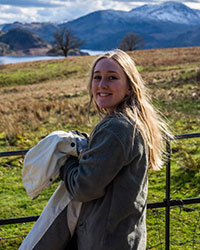Carys Williams
Biography
I'm a first year PhD student at the Wolfson Atmospheric Chemistry Laboratory (WACL) at the University of York. I will be working with Professor James Lee and Dr Sarah Moller to study and analyse NOx emission data taken from the BT tower, with the aim of informing government policy through collaboration with Defra.
I previously completed my MChem degree at York, where my master's project involved the investigation of SOAs in megacities, under the supervision of Professor Jacqui Hamilton. Between my studies, I worked for a year as an air quality consultant, this involved the preparation of air quality assessments for residential and commercial developments, as well as a range of field work. I am originally from the Gower, and in my spare time I love exploring the outdoors and trying out all the restaurants York has to offer!
Qualifications
Masters in Chemistry.
Research interests
I am interested in investigating air quality in urban environments and aim to forge a career that will help improve public health through improvements to government policy.
Teaching interests
Chemistry.
Project title
Direct Measurements of NOx emissions in Central London: How are they changing and how can they be used to inform government policy?
Supervisors
Funding
Leeds York NERC Panorama Doctoral Training Partnership (DTP).
Project outline
The project will use measurements of NOx made at the BT tower in Central London to calculate emissions using the eddy covariance technique. A footprint model will then be used to link these local fluxes to the surface, allowing them to be compared with emission inventories and to aid in source apportionment.
Measurements taken during this project will be used to further assess the mix of sources of NOx as the vehicle fleet in London becomes increasingly electrified and thus having low or zero exhaust emissions. Such data is crucial for investigating which sources of NOx (eg from domestic / commercial combustion or industry) will dominate in future and therefore will inform how air pollution policy needs to respond to those changing sources.

